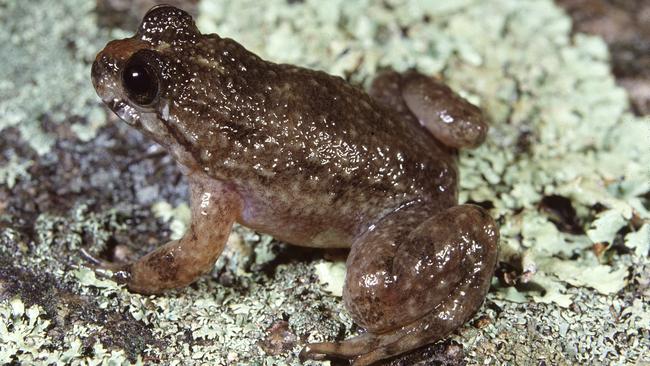Pioneer-Burdekin Pumped Hydro at risk from ‘extinct’ frog species
A unique frog thought to be extinct could bring a Queensland multibillion-dollar pumped hydro project to its knees, should it happen to be rediscovered.

QLD Politics
Don't miss out on the headlines from QLD Politics. Followed categories will be added to My News.
A unique frog thought to be extinct could bring a Queensland multibillion-dollar pumped hydro project to its knees, should it happen to be rediscovered during exploratory works.
Queensland Hydro has told landowners that if a northern gastric-brooding frog – which hasn’t been spotted since the 1980s – was found, it could pose the end of the flagship Pioneer-Burdekin Pumped Hydro project which the government has already spent more than $111m on.
Minutes obtained by The Courier-Mail show that during a recent meeting with stakeholders the subject of the northern gastric-brooding frog and its link to the Pioneer Valley – the proposed project site – was raised.
“It is presumed extinct, so if it was rediscovered here, this would be a very significant finding,” Queensland Hydro representatives said.
“There have been a number of surveys done over the past 25 or so years, including recent
surveys by university researchers to look for any remaining populations of this species, but
none have been found.”
It was presumed the population of the frog – which boasted the biologically rare trait of swallowing fertilised eggs and ultimately regurgitating fully formed baby frogs – was likely destroyed by the Chytrid fungus, which damaged significant Australian frog populations through the 1990s.
Asked whether finding one of the frogs would stop the whole project, locals were told it would depend on where it was found, and what impact the project would have on the remaining population.
The impact of the Pioneer-Burdekin Pumped Hydro project on the environment in the picturesque Pioneer Valley has emerged as a key concern, with close to 100 species of fauna and more than 300 flora species identified in recent studies of the land.
Along with species of frogs, gliders, quolls, birds, reptiles and crayfish, the region is also known as a leading platypus hot spot.
Minutes of the meetings also shows Queensland Hydro conceding relocating platypus could prove problematic.
“Translocation is one option that is being considered by the project, but it is a challenge,” locals were told.
“There are projects that have done this successfully, but it takes research and preparation to identify suitable translocation sites.”


